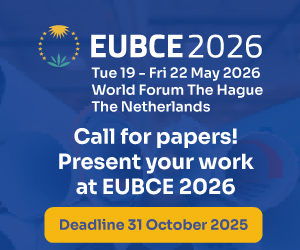Post - Blog
How to build trust in carbon markets
- 10 months ago (2025-02-06)
- Junior Isles

Olga Rivas , Technical Director at LRQA

EUBCE 2026 - 34th European Biomass Conference and Exhibition
The approval of Article 6.2 and 6.4 at COP29 is a game-changer for carbon markets, especially in the renewable sector. However, market credibility hinges on integrity – without it, carbon trading risks failing to deliver real environmental benefits.
The verification of carbon credits will be essential to driving meaningful private sector adoption and more broadly, the success of international carbon trading.
Here, I explore the role of verification in ensuring that carbon credits are legitimate, measurable, and permanent. In turn, we will demonstrate how this can build trust among businesses, investors, and consumers.
COP29: making or breaking carbon markets
Up until COP29, the promise of carbon markets with the potential to channel investment into environmental projects that can deliver impact had been undelivered. Many businesses and investors were turning away, due to concerns around exaggerated claims by project owners - for example actions not being taken or carbon emission reductions being double counted - leaving the future of carbon markets uncertain.
However, two significant positive steps forward were taken at the conference in Baku:
-
Article 6.2 framework
– This agreed framework requires host nations to specify conditions for authorising and adjusting trades, with the aim of reducing investor risk and enhancing transparency.
- Article 6.4 mechanism – also known as the Paris Agreement Crediting Mechanism (PACM) will establish a robust framework for generating carbon credits, significantly boosting investor confidence in renewable energy projects. This will facilitate access to financing, as projects can generate additional revenue through the sale of verified carbon credits. Projects for Article 6.4 aligned credits are expected to be available from early 2025.
The agreements were broadly welcomed as efforts to improve transparency and accountability, laying the foundations for an effective and robust carbon market. In fact, the United Nations Conference on Trade and Development (UNCTAD) stated that carbon markets could be a powerful tool for the least developed countries to support sustainable and resilient growth.
Concerns remain, however, around the potential for greenwashing, unintended increases in carbon emissions in specific sectors and the lack of human rights safeguards in place for local communities who need to be consulted with as part of projects. As with all schemes and markets, success of the market will be reliant on its implementation and all stakeholders involved adhering to the rules. This is where verification is key to building trust and credibility.
The role of assurance
Verification that carbon credits represent real, measurable, and permanent reductions in greenhouse gas emissions is essential to their success as currency. If businesses, investors, and consumers can trust in this impact, they will be more likely to participate in carbon markets.
The role of independent audits and ensuring transparency is crucial here: by verifying that projects meet the required standards and accurately report emission reductions.
Verified carbon credits also help reduce the risk of fraud and double counting, providing peace of mind to companies that their investments in carbon offsets are sound. Through ensuring that emission reductions are not counted more than once, either within the same country or across different countries, businesses can be reassured that their contributions are making a real impact.
Assurance also plays a key role in ensuring a financial return on investment (ROI). With verified carbon credits able to be traded in carbon markets, a financial return on investments in emissions reduction projects can be achieved. This potential for profit can be a significant motivator for private sector engagement, but only through verification can we be sure that the credits are credible and marketable, which in turn is essential for maintaining the financial viability of carbon markets.
Safeguards
While assurance and verification are vital for building a robust carbon market, so is incorporating relevant safeguards to help mitigate carbon credits inadvertently increasing emissions in sectors like fossil fuels.
Four key steps that can be taken include:
- Exclusion of high-risk projects - Avoiding the issuance of carbon credits for projects that could lead to increased emissions or lock-in unsustainable practices, such as certain fossil fuel projects.
- Stringent baseline and additionality criteria - Setting strict criteria to ensure that only projects that provide genuine, additional emission reductions are eligible for carbon credits.
- Regular monitoring and reporting - Implementing continuous monitoring and reporting requirements to track the actual impact of projects and ensure compliance with sustainability goals.
- Sector-specific regulations - Developing specific guidelines and restrictions for sectors with high risks of unsustainable practices to prevent misuse of carbon credits.
By adhering to these principles, we can ensure that the carbon market remains a powerful tool for combating climate change and promoting sustainable development. Appealing to environmentally conscious consumers and investors, brands can enhance their reputation and also differentiate themselves in the market as leaders in sustainability.
The approval of Article 6.4 at COP-29 is a significant step forward, and with rigorous verification and assurance processes, we can maximize its potential to drive meaningful private sector engagement.
